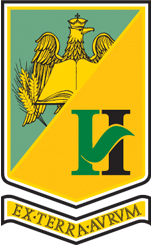Published in Scientific Papers. Series B, Horticulture, Volume LIX
Written by Ancuţa CRÎNGAŞU (BĂRBIERU)
Peas (Pisum sativum) are an excellent source of protein, carbohydrates and many essential micronutrients therefore isconsidered a nourishing flow throughout the body. Field pea is the main large-grain legume in Europe. According to thepurpose, peas can be divided into grain and fodder peas. Grain pea cultivars are mostly spring crop, while the majorityfodder pea cultivars are winter-forms. The field pea it is a main protein crop used for both, human and animal nutrition,being an alternative European plant species that will reduce imports of soybean from the United States, Argentina etc. Inthe last 20 years, in Romania, the grown area with field pea decreased considerable, the average cultivated beingapproximately 25.000 ha/year. The main reason of this aspect is the drastic reduction of number of animal big farms.However, winter peas can be an alternative to improve the area grown with peas in Romania. Preliminary data obtained atNARDI Fundulea shown that the yield of winter forms of peas was between 4267-4800 kg/ ha, over yield the spring type,sown in the spring with 191-215 %. Winter peas have some advantages over spring peas like: a better establishment andmore efficient use of humidity during the winter season - which makes it less vulnerable to drought over the spring,frequently in Romania in the last years; winter peas can be sown in mixture with some cereal (barley, triticale) forobtaining high nutritive green forage; earlier harvest; has a longer vegetation period and get higher productivity and morestable yield than spring peas type. The winter peas breeding programs at international level have several objectives: frost isone of the main climatic stresses which have to be overcome by a winter pea crop; realized the winter pea varieties withbetter performance in no-till technology systems to obtain the green forage in mixture with some cereals. In Romania, theinitiation of winter peas breeding program started at NARDI Fundulea in 2010, following acquisition of some winter peasgermplasm from USA and Austria. The main goals of this program are related to: realized winter pea varieties adapted tospecific climatic conditions from Romania, and initiation of the program for obtaining the green forage.
[Read full article] [Citation]

 breeding
breeding


